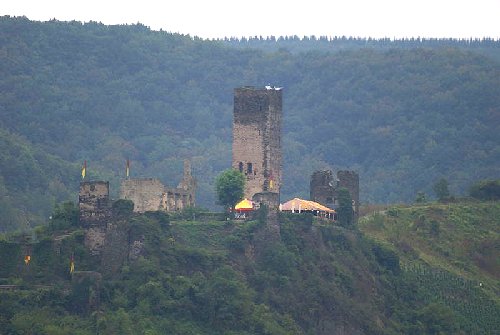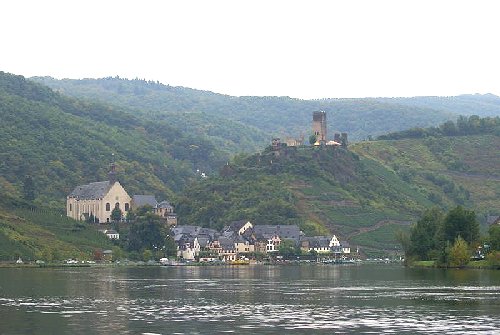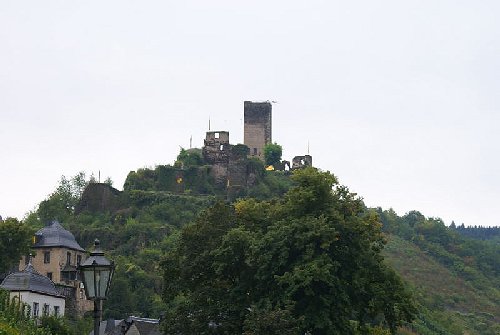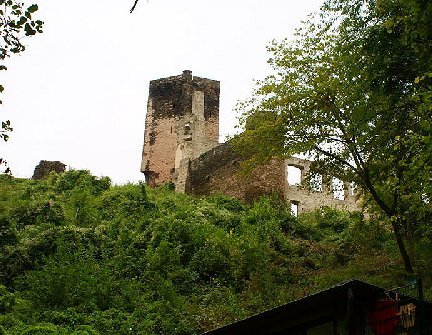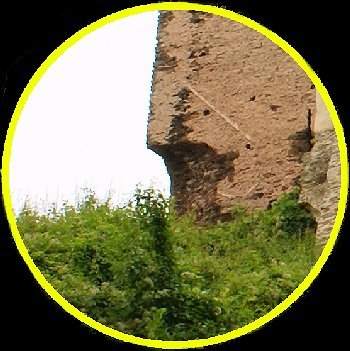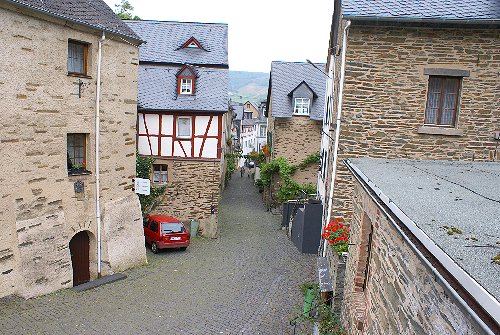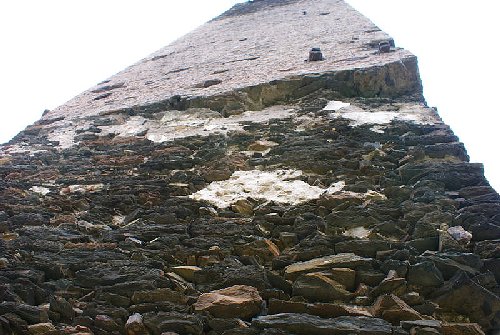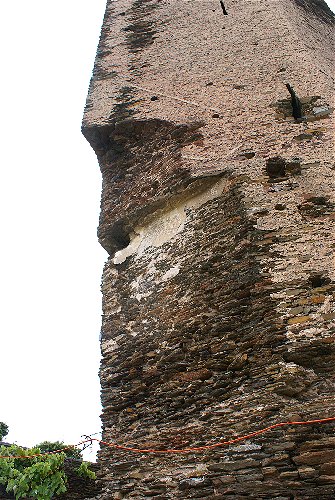Burg Metternich was mentioned in official documents by 1120, but its origin is much earlier, probably being the location of a Celtic hillfort prior. It was originally owned by Ritter Krafto von Bilstein, and hence the name of the town. Its location was ideal for helping to control and protect the trade route along the Mosel River, being well situated above the village of Beilstein. In 1268 it appeared in the documents of the Lords of Braunshorn as a fief of Cologne.
By the 1360s the family, without a male heir, was compelled to give in to the demands of the Lord of Winneberg (see the Cochem entry), who then took over control of the castle. The castle survived the Thirty Years War intact, being successively occupied by Swedish and Spanish troops. However, after the Lords of Metternich took over the castle it fell victim to the French in 1689. The last Metternich to own the castle was in the early 1700s, to which it then passed on to a series of private owners which is its status as of 2007.
Right, two views of Metternich and the village of Beilstein. Metternich was well positioned close to the river to provide protection for trade. However, its lack of elevation meant that it was a far easier target for French cannon in the 1680s.
All these photos of Metternich were taken in 2007.
Left, a fine view of the castle as one works their way through Beilstein. Access is a trail along the north slope, but you first wind your way through some of the town, which is quite quaint and far from being a tourist trap. Tourists do come here, but typically they are Germans or Dutch. You will rarely find an American here, making this a fine adventure! Be careful that you do not wander inadvertently into the local Catholic convent! It's easy to do, as one of the trails is misleading.
As you ascend the hill you will see a nice view of the castle's tower, which has two notches near the base on opposite corners (inset: one corner close up). The origins of these uncertain. However, upon consideration I believe they were the notches for wall sections extending from the base of the tower. I'm not certain of this, and didn't do a site survey to look for remains of the walls (such as footings). However, this would make sense. Otherwise, I cannot think of any military reason why the tower was built this way.
These make for interesting viewing and is a unique feature of Metternich.
To the left is a close up of the opposite corner showing this unique undercut feature on the keep. Below, is a view from below looking up the tower of another side that is slightly undercut, but not as pronounced as the other two. Metternich's tower is five sided, being mostly rectangular with a point facing to the south.
It goes without saying that these undercuts do little to inspire confidence in the structural integrity of the keep! However, it is safe to climb to the top, and it is worth it as the view is fantastic.
